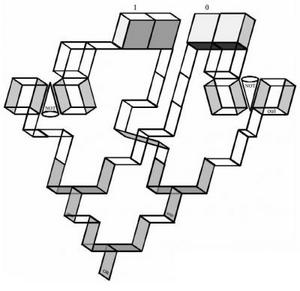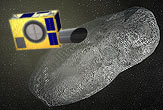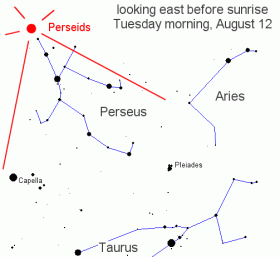Since the idea of using DNA to create faster, smaller, and more powerful computers originated in 1994, scientists have been scrambling to develop successful ways to use genetic code for computation. Now, new research from a professor at Rensselaer Polytechnic Institute suggests that if we want to carry out artificial computations, all we have to do is literally look around.
Assistant Professor of Cognitive Science Mark Changizi has begun to develop a technique to turn our eyes and visual system into a programmable computer. His findings are reported in the latest issue of the journal
Perception.
Harnessing the computing power of our visual system, according to Changizi, requires visually representing a computer program in such a way that when an individual views the representation, the visual system naturally carries out the computation and generates a perception.

|
| ©Rensselaer/Changizi
|
| To actually get your visual system to carry out this computation requires "perceptually walking through the circuit" from the inputs downward to the output.
|






Comment: Did you catch that last remark? Although the Soviet Union destroyed a great scientist, they saved his life's work. Strange that. It reminds one of article like this and this.